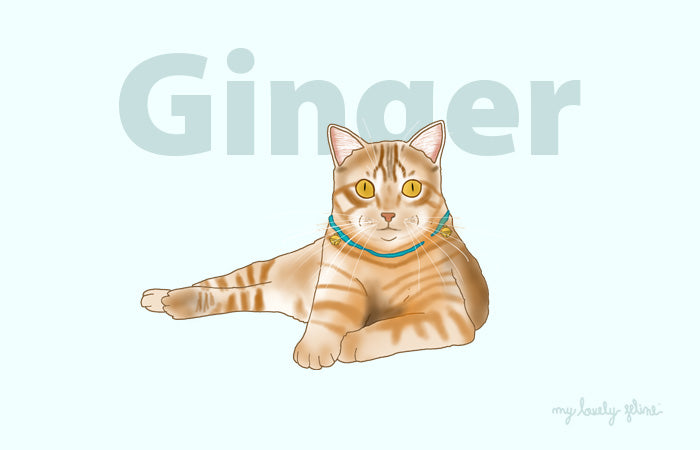—Feline Behavior Specialist 🇺🇸
|
Orange tabby cats, also known as marmalade or ginger, are one of the most popular types of cats requested by adopters. What exactly gives them that beautiful coat? What type of personality do they have? And are they mostly male? We’ll answer all of these questions and more. |
Is orange tabby a breed?
No, it’s a color and pattern that’s found in most breeds that aren’t related to color. The most popular breeds include British Shorthair, American Shorthair, Persian, Bengal, Maine Coon, Abyssinian, American Bobtail, Munchkin, and Egyptian Mau. An orange tabby can have short or longhair.
What gives gingers an orange color?
A pigment called pheomelanin, which also produces red hair in people, creates the orange color. The shade of the orange could be more red, yellow, or even a brownish color. Some gingers can also be bi-color and have white spots.
Are orange cats ever solid orange?
No, they always have a tabby pattern, even if it’s faint.
How many different coat patterns are there for orange tabby cats?
There are four main tabby patterns:
- Classic tabby - Swirling patterns on the sides. Looks like a marble cake.
- Spotted tabby - Oval markings (not stripes).
- Ticked tabby - Also called an Abyssinian tabby or agouti tabby, most of the tabby markings are on the face.
- Mackerel tabby - Narrow strips that run parallel. Often called a tiger cat.
Sometimes, a 5th pattern, called patched tabby is added. This is when a tortoiseshell cat has spots of orange tabby in its coat, and is called a tortoiseshell tabby or torbie.
What color eyes do marmalades have?
Their eyes can be anywhere from bright green to a golden color or even copper.
My orange tabby has freckles. Should I be worried?
Nope. Many develop harmless freckles on their nose and lips as they get older.
What are their personalities like?
Studies have shown that orange tabbies are very gregarious, vocal, affectionate, and expressive. Their loud purrs and meows will tell you when they’re happy or hungry. It’s also possible their striping acting as camouflage makes stalking prey easier, giving them an increase in confidence.
However, most personality traits have more to do with early life or inherited paternal traits, and less to do with coat color or pattern.
Why do all tabbies have the M striped marketing on their head? What about the dark stripe coming from the outer corner of their eyes?
Although there are religious and mythical explanations, both traits are standard genetic components of a tabby pattern, and likely help with sun glare when hunting (think about a sports player putting black under their eyes).
Is it true there are more orange males than females? If so, why?
Yes, it’s true 80% of orange tabbies are male and 20% female, and here’s why. Every female has XX chromosomes and every male has XY. The orange coloring is on the X chromosome, so a female needs both parents to pass the orange chromosomes, whereas the male only needs his mom to. Although female orange tabbies aren’t the most common, they can reproduce, which is different from another chromosome color/sex relationship.
Calico cats are mostly white with patches of orange and black. An estimated 99.9% are female because it takes two Xs to make a calico. However, sometimes a males with have three chromosomes, XXY, and he will be born a sterile calico.
Are there any diseases that seem to be genetically tied to orange tabbies?
No, there aren’t, however, if your cat is a pedigree breed, your cat could have a greater chance for certain inherited health issues.
According to Merck Veterinary Manual, the most commonly reported congenital and inherited defects in cats are:
- Cerebellar hypoplasia (CH) aka Wobbly Kitten Syndrome - Underdeveloped cerebellum (which controls mobility and balance)
- Eye and eyelid defects
- Heart defects
- Cryptorchidism - One or both testicles absent
- Polydactyl - Extra toes
In Closing
Now that we’ve covered all the basics, hopefully, you have a better understanding of orange tabbies! If you want to adopt an orange tabby, don’t be afraid to ask local organizations what orange tabbies they have available. They are a fairly common color and pattern.
Make sure you mention what personality types you’re looking for as well, so you can find the perfect fit for your home.
Article by Elizabeth Italia 🙋♀️
Cat Behavior & Fostering Specialist



